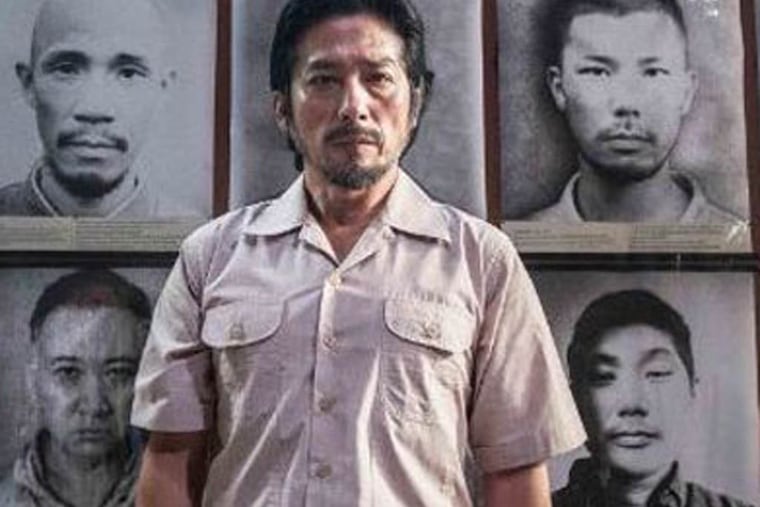WWII torture revisited in 'Railway Man'
Colin Firth plays a British Army vet who confronts the Japanese officer who tortured him in the fact-based Railway Man.

WE NOW have handy initials - PTSD - to label the psychological maladies that afflict war veterans, but still no way to make sense of the horror behind it.
That is a point driven home in the engrossing "The Railway Man," the true story of a British soldier, Eric Lomax (Colin Firth), tortured in WWII, who finds his Japanese tormentor, an officer named Nagase (Hiroyuki Sanada), still alive decades later, and seeks him out.
Lomax intends to kill the man, but their confrontation - among the most fascinating screen conversations of recent vintage - reveals commonalities in the men that take the encounter in unexpected directions.
They share, for instance, a unique understanding of why neither has talked to anyone about the grotesque details of the experience.
"Nobody," Lomax says, "would believe it."
Lomax himself seems not to entirely believe he's survived a wartime ordeal that killed so many: captured British soldiers used by the Japanese as slave labor to build a Burma railway (the same railway at the heart of "Bridge on the River Kwai," to which this movie pays subtle homage).
Lomax survives back home by walling himself off in a world of railway trivia, a British pastime that he takes to a disturbing extreme. His defense mechanism backfires when internalized emotions threaten to ruin his only meaningful relationship, formed by a midlife marriage to Patti (Nicole Kidman).
"Railway Man" takes an offbeat, strangely meditative approach to this material - carefully modulated performances, unusual visual choices, non-linear meshing of flashbacks (young Lomax is ably played by Jeremy Irvine). Sometimes, past and present are allowed to co-exist in the same image.
Shots to suggest the characters' isolation often require the actors to look searchingly into the camera, which in the case of Kidman heightens her increasingly unnerving screen presence.
On the other hand, "Railway Man" achieves a near-perfect meld of style and performance when Lomax finally travels to Asia and to the torture compound itself - now a museum (and on the edges, a creepy tourist trap) recounting details of the atrocities.
He corners the former Japanese officer, reversing the polarity of their wartime "relationship." Lomax has a knife, but uses language as a weapon to force Nagase to be fully honest, perhaps for the first time, about what occurred (British soldiers were not merely "dead," Nagase concedes, but "murdered").
Firth and Sanada are terrific in this scene, a sequence so smart and so definitive it feels like the natural ending to the story. Alas, what feels like an afterthought epilogue is attached to the end of "Railway Man," sending it out on a tinny note.
Perhaps this is why some have described the movie as sentimental, even mawkish.
Strange things to say about the account of an actual war vet finding the moral courage to forgive.
Perhaps in our virtual, post-modern world, it's gone out of style.
Phone: 215-854-5992
Blog: philly.com/keepitreel
Online: ph.ly/Movies